
We review the history of the heart of the Sinnoh region and the context that surrounds what is much more than just a chain of mountains. Mythology and magnetism.
There is some symbolism in the sequence of the Pokémon Legends: Arceus trailer where a Trainer glimpses from the horizon a huge mountain in the Sinnoh region, Mount Corona. That moment is, in a way, the horizon to which Game Freak places us with a saga that is now celebrating its twenty-fifth anniversary; that of a familiar place, but with a different playable approach. There is one year left to see that work so focused on explaining how everything originated materialize, so we invite you to join us on this short trip dedicated to that place, the heart of the Sinnoh region.

The importance of Monte Corona; What is on that great mountain?
The choice of the Sinnoh region as the one chosen within the eight canonicals for this first installment of the Legends line is not accidental, much less random. Anyone who once played Pokémon Pearl, Diamond or Platinum for Nintendo DS will understand that this archipelago – based on Hokkaido, the southern half of Sakhalin and the island of Kunashir, the latter two in Russia – is one of the most varied in terms of biomes and environmental situations are concerned. High mountains, lakes, caves, forks, interconnected routes. Junichi Masuda’s team, back in 2005 and 2006, was looking during the development of those video games to find the most “perfect” version of the Pokémon adventure to date. After three generations, Game Freak decided to devote itself to the maximum in its purpose by evolving as much as possible an already known idea; provide more complexity and background to the region. In fact, Sinnoh owes its etymological origin to Shin’ō, which means “mystery”, due to the high volume of enigmas around it.
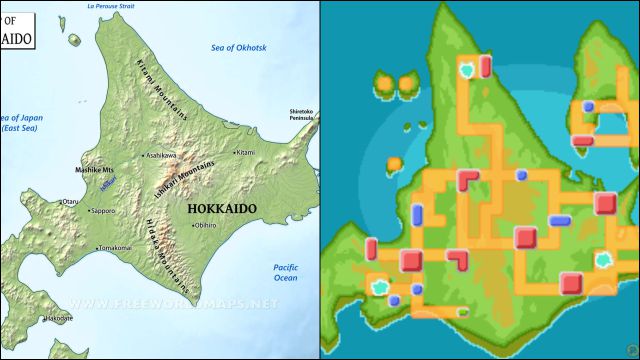
Hokkaido, Japan (left); Sinnoh, Pokémon (right).
Also, Mount Corona (Mr. Coronet in English, a type of small crown or heraldic crown; Mt. Tengan in Japanese, “heavenly crown”) bears a strong resemblance to Mount Fuji, but is not based on the latter. Mount Fuji is the highest peak on the Japanese island of Honsu, the main island of the archipelago, while Mount Corona is inspired by the Ezo Mountain Chain, a chain made up of five great mountains: Teshio, Kitami, Ishikari, Yubari and Hidaka . If you had to choose a single mountain, you tend to link Mount Corona with Mount Yotei, a dormant volcano in western Hokkaido closely resembling Mount Fuji. A detail that cannot go unnoticed is that Hokkaido became part of Japan in the 18th century, Edo period; maybe the video game was set around that time.
The playable experiments in the saga came later (with Unova, with Alola, with Galar …); Sinnoh had a responsibility to improve what was seen in Hoenn in his approach to stage design. Balance. Sinnoh sought balance, a territory whose backbone is none other than the protagonist of this article: Mount Corona. We are talking about the highest mountain in this region, a long range on the ordinate axis that separates Sinnoh into two great plateaus, the western plateau and the eastern plateau. Due to its length, it fits perfectly with its origin in the Ezo mountain range.
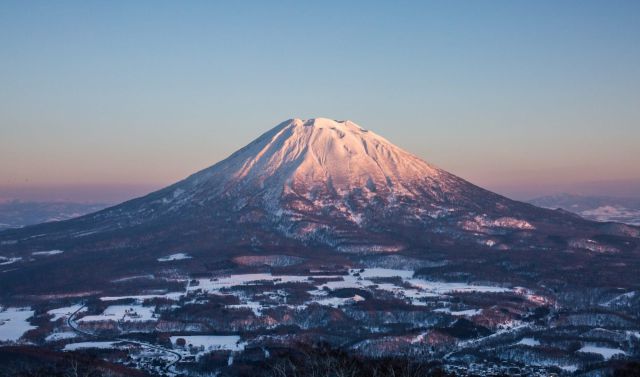
Mount Yotei, Hokkaido, Japan
The canonical legend narrated in the video games themselves makes it explicit that it is the highest mountain range in the entire Pokémon world; it is also the most complex and convoluted in its exploration. It was through this mountain, whose peak is at such an altitude that it is completely clouded by snow, where this eight-story place (in Pokémon Pearl, Diamond and Platinum) originated with five adjoining routes and that required the use of nothing less Than six MO (Hidden Machines) to explore from top to bottom. Never has it taken so many elements of stage interaction to get to the top of a particular location in the series.
The trailer for Pokémon Legends: Arceus invites us to think that we can get closer, who knows whether to climb, Mount Corona, whose prominence seems vital in the playable context of Game Freak’s new bet for 2022.
Dangers and magnetism: Mount Corona, full of legends
Mount Corona is dangerous by definition, with a considerable number of different species of Pokémon, which forced to go inside with a versatile team, with a good combination of types in the face of possible weaknesses and resistances. There is a key element in this mountain that is not fully explained in Pearl, Diamond and Platinum: magnetism. Mount Corona – as explained in the anime with a little more graphic support – is surrounded by a special magnetic field capable of producing the phenomenon of evolution in different species of the Pokédex.
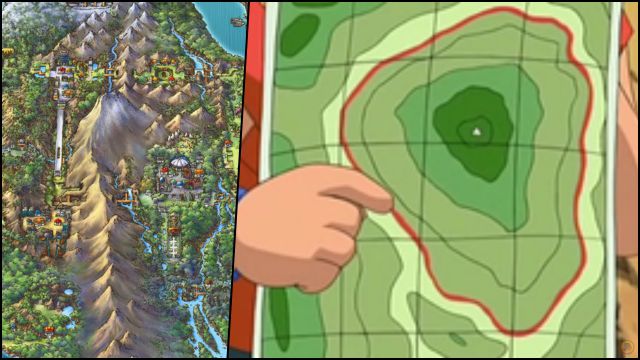
A cord around Mount Corona generates a special magnetism.
Game Freak introduced these natural phenomena to justify the presence of new evolutions in already known species; specifically, Magneton (Generation I; Kanto) and Nosepass (Generation III; Hoenn), which surprisingly received a natural evolution in a different region than the one from which they are original. By leveling up these two species on Mount Corona they evolve into Magnezone (Magnet Pokémon) and Probopass (Compass Pokémon), respectively. Also in the Explorers installment of the Mysterious World saga, far from the canon, where the Corona Rock object is used to evolve into two species. A reference that evidenced the importance of the Mystery Dungeon series in the genesis of the universe that concerns us, when humans did not yet exist as such.
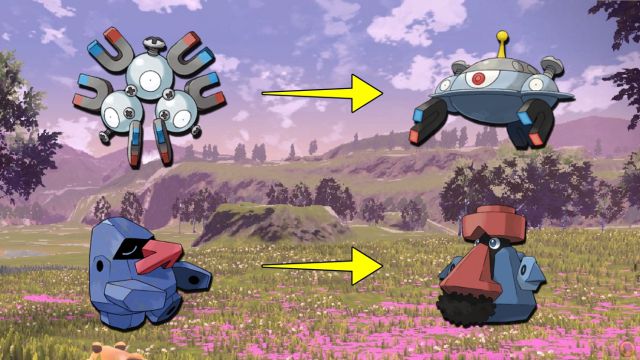
Magnezone (Magnet Pokémon) and Probopass (Compass Pokémon) evolve if they level up on or near Mount Crown of Sinnoh.
This event would be the trigger a decade later to the appearance of regional forms in Alola and, later, also in Galar, such as Farfetch’d and Sirfetch’d. Elements, in short, that enriched the phenomenon of evolution in Pokémon … but without a specific explanation. The location of this mountain has even caused species like Gastrodon and Shellos to change their color depending on which side of Sinnoh they come from.
What can we expect from the plot background of Pokémon Legends: Arceus
Pokémon Legends: Arceus will tell us about the origin of Arceus, the Pokémon god, the species that originated the Pokémon world as we know it, and also how the first Pokédex was created. On the way we will be accompanied by an initial trident composed of Cyndaquil (Generation II, Johto); Oshawott (Generation V; Unova) and Rowlet (Generation VII; Alola), which inevitably confirms that in this feudal Sinnoh there were researchers and travelers from other regions. “These Pokémon came from the hand of a Pokémon Professor who found them during his investigations in various regions,” they tell on the official portal.
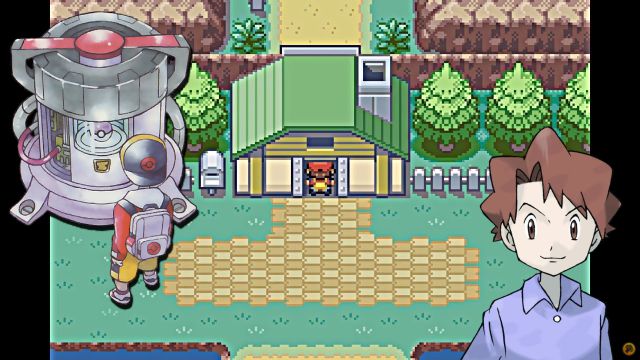
Bill’s House on Route 25 | Pokémon FireRed / LeafGreen (GBA, 2004)
Will we meet Bill’s ancestors? Bill is the chief Pokémon researcher for the Kanto and Johto regions, whose residence is located on Route 25, north of Celestial City. He was the inventor of the Pokémon storage system that we have used in absolutely every major game. If it is now possible to store creatures on PCs, it is thanks to him. He was also responsible for the Time Capsule, the exclusive second-generation machine that allowed us to trade species with the Kanto generation. We would not be surprised if that original Professor had some kind of relationship with him or one of the eight professors from the canonical regions (Oak, Elm, Abedul, Encina, Kukui…). At the moment, we know that the Poké Balls of this feudal Sinnoh use as a capture tool wooden Poké Balls that give off steam from their upper part when catching a Pokémon.

Poké Ball from Pokémon Legends: Arceus. They are made of wood and run on steam.
The Lanza Column and the interior design of Monte Corona
It is inevitable that, when looking at Mount Corona, we will notice its highest peak, the Lanza Column. This place is home to ancient ruins in the region; the place where Dialga – protector of the passage of time – Palkia – protector of space – and Giratina – protector of the World of Distortion – (Trio of the Dragon) were created by the god of the Pokémon universe, Arceus. It is here where the most important events of the original video game plot take place, as Helio, leader of Team Galaxia, manages to reunite the three with the red chain. Have you noticed that a logo suspiciously similar to that of Team Galaxia appears on the clothes of the Pokémon Legends: Arceus trainers?
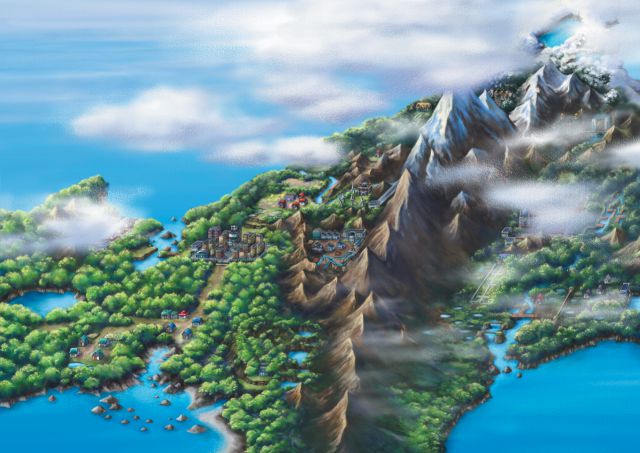
Mount Corona in Sinnoh
So far —as we will see again in Pokémon Shiny Diamond and Shimmering Pearl— Mount Corona has three entrances (Route 207, Route 211 and Route 216) and a total of six floors, plus its corresponding basement and peak. Game Freak has great room for experimentation here, as they can even integrate more legendary species, such as Regice in the Iceberg Ruins of one of the caves of Mount Corona in Pokémon Platinum. This territory is presented as a bank of playable opportunities in which to substitute MOs such as Rock Strike, Force, Waterfall, Clear, Surf or Rock Climber so that it is the Trainer himself who, together with his Pokémon and abilities, climb, climb, swim, break and cut whatever is in front of you. A puzzle, in short, that turns Monte Corona into a veritable dungeon; as other open-world works have already done in more contemporary times, from The Legend of Zelda: Breath of the Wild (Nintendo, 2017) to Death Stranding (Kojima Productions, 2019), in which the highest points of our destination served as a unique visual reference to that goal.
The importance of Mount Corona in Sinnoh’s argument is vital, but it can also be a tangential element to understand the gameplay of Pokémon Legends: Arceus if it is finally there where the greatest plot weight of the adventure resides and the greatest challenge in what that to mechanics and challenges it refers.
Pokémon Legends: Arceus is scheduled for early 2022 exclusively for Nintendo Switch. Soon we will know more details of this ambitious and different proposal where the action mechanics will shake hands with the traditional RPG that we have been seeing since 1996.

